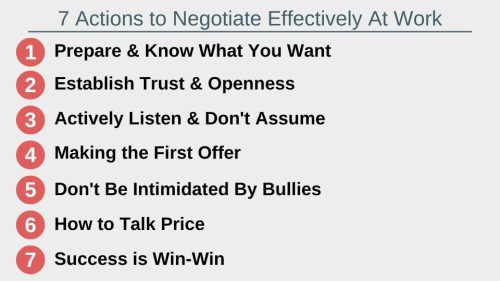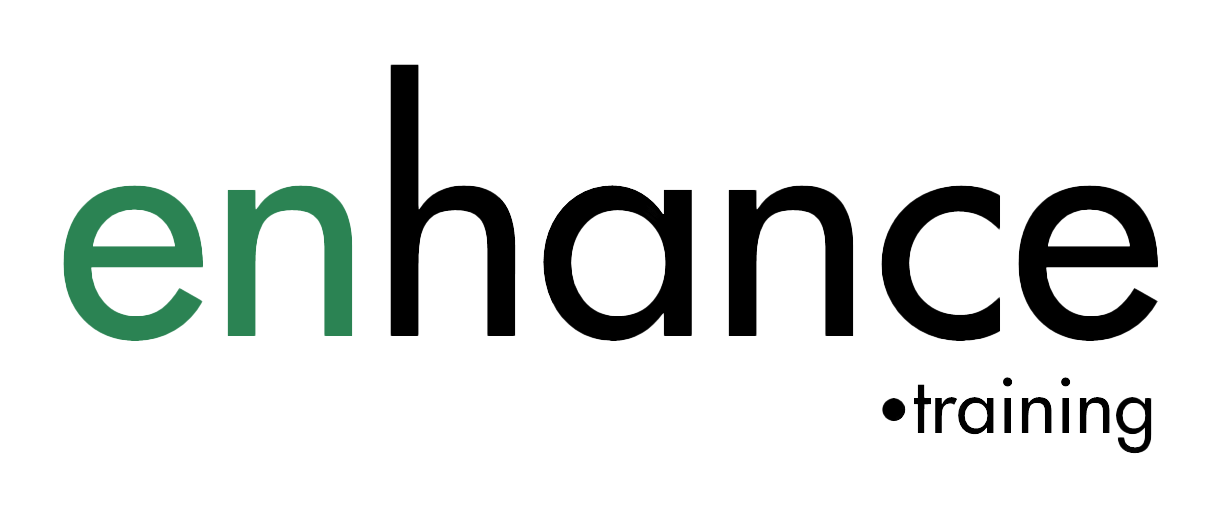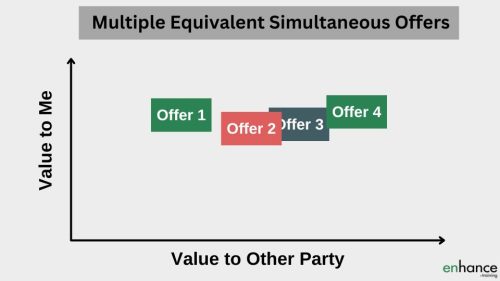7 Actions to Negotiate Effectively at Work

Negotiate effectively at work and you make your life a lot easier. You will be negotiating every single day, with your team, with stakeholders, with your manager, with customers and suppliers. Good negotiation skills will
- Help build a great reputation and results as a manager
- Create time and resources for you and your team to do your jobs well
- Increase sales and/or reduce costs for your company
- Help build trust with and appreciation from your team
Those with poor negotiation skills at manager level get left behind. They get the worst end of deals, are not able to help their team properly, often don’t get promoted as quickly and they have a lot less fun at work.
Better negotiation skills will help you every single day at work.
7 Actions to Negotiate Effectively at Work
- Prepare and know what you want
- Establish trust and openness
- Actively listen and don’t assume
- Making the first offer
- Don’t be intimidated by bullies
- How to talk price
- Success is win-win
The better you get at negotiating, the easier you will find creating value for your business. Being good and confident at negotiating is admired and celebrated in many organisations. Make yourself more valuable to your bosses.
Watch on YouTube
Listen on Podcast
So let’s talk about negotiation. You do plenty of negotiation every day of your life. I am aiming to help you prepare for more complex negotiations – with customers, suppliers or being internally negotiated at work.
Prepare and know exactly what you want – The first action to negotiate effectively at work
Understanding what you want is a critical starting point in negotiation. If you are not sure want you want, you put yourself at a big disadvantage when negotiating.
Some questions to answer to help define exactly what you want:
- What would be an amazing result for you? Can you define this? Don’t worry too much about whether the other side will accept this position at this point.
- What would be your walk away point? This is where what you get is not really worth the effort of getting it, or where you run out of budget or come up against other constraints that you can’t change without a lot of effort.
- What alternatives would be acceptable to you?
- What could you give away that are nice to have rather than must have areas?
- Can you prioritise what you want if there are multiple points or areas, and group them into must have and nice to haves?
Once you are sure about what you want, define it clearly and then prioritise the components of what you want. This gives you a good negotiating platform.
Put Yourself in the Other Party’s Shoes
Next steps to negotiate effectively at work is to put yourself in the other party’s shoes and think through what they might want from you.
Do your research and ask others for input so you can work through several scenarios.
The better you understand the other party’s position before you enter negotiations, the more likely you will be able to offer them a deal that works for both parties and meets all your most important requirements in full.
List out any assumptions you are making about the other party’s position to validate during negotiations.
Another negotiation tip is to come up with multiple offers that are of similar value to you that might provide different value to the other party. A simple example might be to offer a price at the bottom of what you think will be acceptable to the other party and combine this with payment in advance. Cash in advance may be more valuable than the extra profit to the other party.
The best prepared often get the best deal in negotiations.
Establish trust and openness – The second step in negotiations
When at work, entering into negotiations with an open and honest approach usually helps make negotiations successful. I am not suggesting laying all your cards on the table right way. Creating trust is a key part of negotiating. Being open is a powerful way of creating trust.
If you are being open and sharing information, the other party is a lot more likely to reciprocate. Greater knowledge and understanding between party’s help create a better deal for both parties.
Start small and see how the other party responds. If they share some information, you can share more. If they don’t give you anything in return, you can adjust your approach.
In many negotiations at work, you will need to work with the other party into the future. Building trust is a great way to get what you want today and also help create good foundations for all future negotiations.
Establish trust by being open and sharing information in stages. Adjust your approach depending on how the other party reacts.
Actively Listen and don’t assume – The third action to negotiate effectively at work
Making incorrect assumptions when negotiating is so easily done. Many courses on negotiation open with exercises in which both parties being given different briefs to highlight how making assumptions hinder you during negotiations.
Try not to make assumptions. Ask questions to find out what the other party’s position is. Ask questions to validate any assumptions you have made in your preparation for the negotiation. Keep your questions as open as possible, which gives you much more scope to learn about the other party.
The better each party understands the other, the better your chances of coming up with a deal that works well for both parties.
Actively listen to what you are being told. How does this confirm or change your approach? Keep aware of the body language and all the other non-verbal clues being provided by the other party – pauses, tone and pace of voice, use of eyes etc. Are there any conflicts between what you are being told and the non-verbal communication for instance?
Aim to be listening more than talking during the negotiation. Don’t assume – ask open questions to build a picture of what to the other party wants. Keep mentally referring back to the scenarios you planned for and adapt the closest or most appropriate ones.
Making the first offer – The fourth action
Making the first offer is a bit of a doubled edged sword. You get to set the first reference point or anchor point of the negotiation, which usually gives you an advantage.
If your first offer is unrealistic, too high or too low, you risk damaging the trust you have built up and delaying or derailing the negotiations.
If you have done your homework, have good market knowledge and reasonable insight into what the other party wants, putting forward a first reasonable offer means the negotiations start from a point of your choosing.
Don’t lose the trust you have built to this point.
Don’t be intimidated by bullies – The fifth action to negotiate effectively at work
You will come across parties that employ bullying tactics – such as being aggressive to claim value, refusing to move or provide information, starting with very low or high pricing or other elements to anchor the negotiations firmly to their advantage. You may get direct or implied threats such as buying from competitors or stopping supply etc.
These tactics usually invoke flight or fight responses in all of us. We need time to get our reactions back into a rational mode.
Use Questions
Use questions to buy yourself time to calm down and think. Mirroring is a great technique, which is where you take 1-3 words from the end of their statement and use them in your next question.
A simple example – Customer “You must get the delivery to me by Friday!” You “By Friday?” and then you are silent awaiting their explanation. Mirroring is a great way to get or keep the other person talking.
Another useful tactic to employ is labelling. For instance if they are being very aggressive in their manner, you could state “I am getting the sense there is a lot of tension around this subject”. Labelling their behaviour or emotions draws their behaviour explicitly into the open which can help defuse it or reduce it. Getting explanations become easier when emotional states are reduced.
When facing strong arm tactics, it is very important to manage your own body language. Show calmness – use a slow pace of voice with calm confidence tone. Adopt neutral postures etc. If you show you are calm, unfazed, and not intimidated, the bully is much more likely to change tact. If you play into their hands, they will continue using bullying tactics to try intimidate and control you and the negotiations.

How to talk Price – The sixth action to negotiate effectively
The price part of the negotiation is always difficult and the part most people dread. Talk about price towards the end of the negotiations. After all, if you have not negotiated all the terms how can you effectively price what you are buying or selling?
When discussing price, don’t provide a range, provide a specific number. If you provide a range, the other party will take the point in the range most advantageous to them.
Give or ask for a price that allows you some movement after giving it. Be clear on the value that you are providing to the other party. Price is important but it is rarely the only important element.
If you have given a price and the other party pushes downwards on that price, ask what they are going to offer in return for moving on price. It could be better payment terms, additional marketing exposure, better SLAs. This is where your preparation really comes into play. What is valuable for you and less of a concern for the other party.
Avoid negotiating just on price. If you do, getting a good deal is a lot harder for you.
Aim for Win-Win – The Best outcome when negotiating
Aiming for win-win is a very sensible outcome when you need negotiate effectively at work. You will probably have to work with the other party in the future. Taking the largest slice of the pie you can, might be good in the short term, but will they do business with you again?
A far better aim is to try to enlarge the pie available to both parties in the negotiation. This gives each of you far more room to both walk away with a good deal that meets each party’s needs. A simple example of enlarging the pie could be discovering that lower minimum order quantities is more important than price because of the stock issues the other party has. Construct a deal that helps both parties create additional value – extra profit for one and better stock management for the other.
Aim for win-win, particularly when negotiating at work when you need to retain good relationships into the future.

in summary
So in summary, to negotiate effectively at work make sure you are really clear about want you want and then prepare – both in terms of what is essential and nice to have on your side and in terms of preparing scenarios based on what you think the other party wants.
Manage your emotions and responses during the negotiation and aim to create trust early and maintain it through the negotiations. Spend more time listening when negotiating and aim for win-win outcomes.
Enjoy negotiating more effectively.

Being good at negotiating at work is such a useful skill to build. Decide what you want and put yourself in the other party’s shoes to think about what they want. Taking these two steps saves you a lot of time and confusion during the negotiations.
Showing you have thought about the other party goes a lot way to building trust and good relations, making your life easier in the future.








